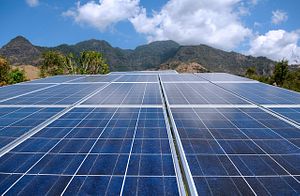The emergence of new ideas, technological advancements and innovative market-driven financing solutions has lent confidence to the idea that universal access to energy services is attainable. This is particularly good news in the Asia and the Pacific region, where, despite making significant contributions to global growth and poverty reduction since 2000, nearly half a billion citizens still have no access to modern energy, principally in rural and far-flung areas. Three-quarters of these people live in South Asia alone. Some 70 percent of the Pacific island households are un-electrified, a level similar to sub-Saharan Africa. The lack of electricity and clean cooking options marginalizes predominantly remote and slum communities who are trapped in energy poverty, preventing them from stepping on the first rung of the ladder to prosperity.
There are a range of approaches, options and sources which, if effectively exploited, can help Asia-Pacific broaden energy access. One of the game-changing elements for energy access is Asia’s emergence as producer and provider of renewable energy technology, with investment in renewables reaching $160 billion in 2015, or over half the global total. Renewable energy options are poised to reshape the energy access challenge. In particular, solar power with its low cost advantages and widespread applicability will pay a major role, as it offers both grid-based centralized solutions as well as decentralized applications such as solar lanterns, solar home systems and solar-powered mini-grids. This year, three large-scale solar proposals in the Middle East and South America have contracted their solar generated power for U.S. three cents per kilowatt hour, which is cheaper than any other source of energy. The marketability of solar energy further benefits from technological advancements in energy storage, driven by utility power and electric vehicle markets. These developments will have positive spillover on the energy access sector.
In many countries of Asia and the Pacific, the decentralized power option offers lower costs than extending the grid into remote locations, which influences long-term energy planning scenarios of countries. These options include mini grids, hybrid systems, biogas and micro-hydro power, depending on costs, local geography and resource availability.
Reliability and scalability require an enhanced role of the private sector to find the most suitable local energy access solutions and to mobilize innovative finance and business models. Energy access solution providers already promote creative solutions, however the private sector’s role in the provision of energy access has been limited, accounting for only 18 percent of total investment. To bring private capital, technology and expertise to energy access, partnerships between public sector and multilateral financing agencies need to offer the right enabling policy environment and a combination of incentives including risk mitigation frameworks, loan guarantees and other supportive credit enhancements.
The potential of private investment in the promoting energy access should not be underestimated. The so-called “bottom of the pyramid” energy users currently spend $37 billion on energy services such as kerosene, batteries or candles, which are often inefficient and more costly than clean alternatives. Many pioneering private sector firms have developed low-cost energy systems at household or village scale such as solar lanterns, biogas or micro-hydro systems and are rolling out business models with product, process and distribution innovations. Across the Asia-Pacific, rural micro-credit is funding energy access including Bangladesh’s Grameen Shakti which has funded half a million solar home systems. Development of indigenous technology capacity in Nepal has lowered equipment costs for biogas and micro-hydro systems. India has leveraged public-private partnerships in its rural electrification efforts, bringing electricity to 32 million households over the last decade. Local provision of energy can have a catalytic effect, leading to economic growth and increased demand for other products and services that can be met by these companies, leading to growing business opportunities.
Realizing the goals of poverty eradication is critically linked to enhancing energy access to the poor. The recent adoption by G20 Ministers of the Action Plan for Enhancing Energy Access in Asia and the Pacific, supported by ESCAP, will assist the region in adopting the appropriate policy framework to scale-up the private sector’s role in enhancement of energy access. As a follow-up to the G20 Action Plan on Energy Access, ESCAP, with the Energy Market Authority of Singapore, is co-organizing an Energy Access Forum at the Singapore International Energy Week in October 2016. The Forum will provide insights on the challenges and opportunities for countries to enhance energy access.
Dr. Shamshad Akhtar is the Executive Secretary of the United Nations (UN) Economic and Social Commission for Asia and the Pacific (ESCAP). She will be speaking about Asia’s new energy realities and the implications for regional energy security at the Singapore International Energy Week (SIEW) 2016.

































